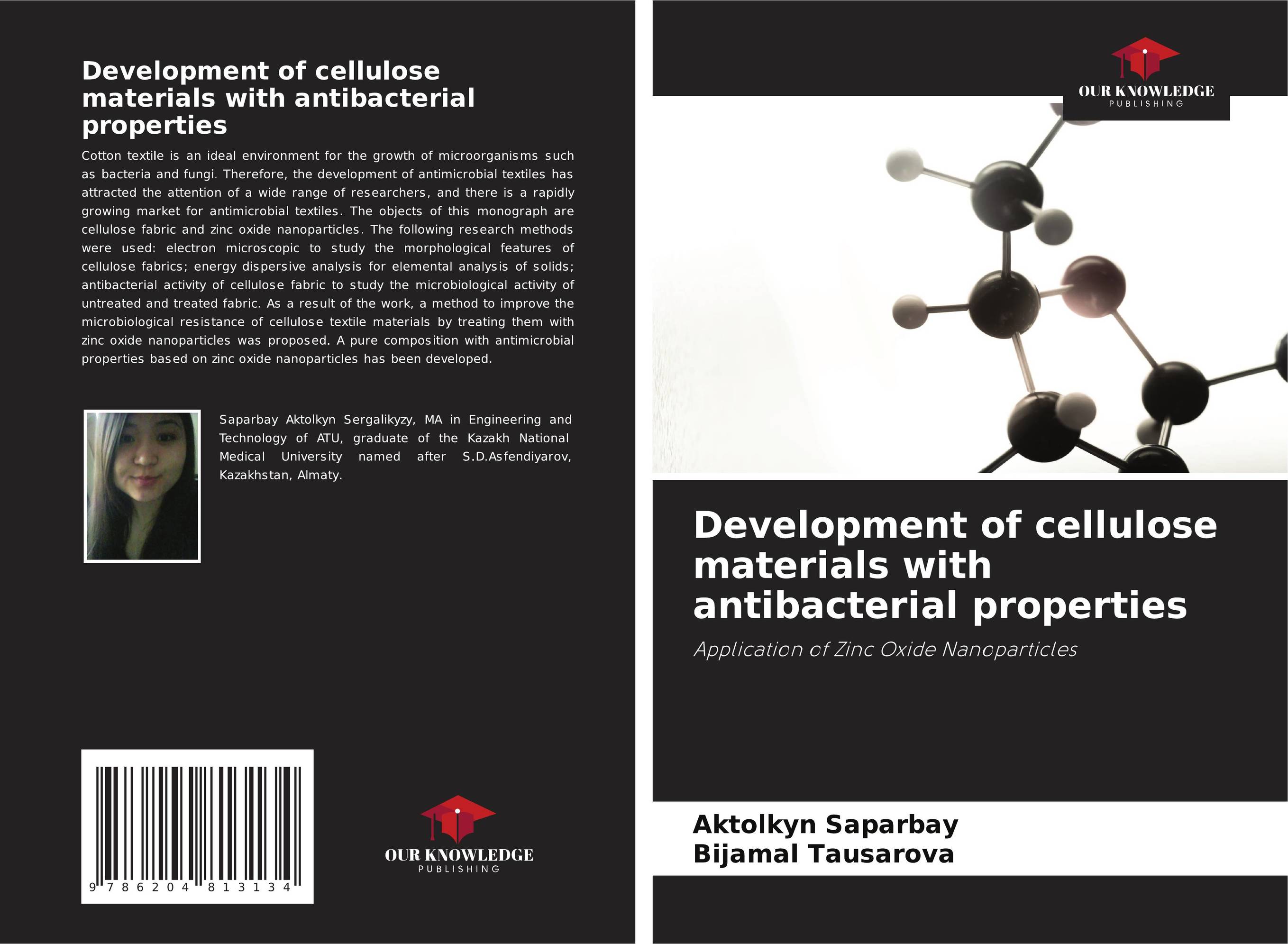| Поиск по каталогу |
|
(строгое соответствие)
|
- Профессиональная
- Научно-популярная
- Художественная
- Публицистика
- Детская
- Искусство
- Хобби, семья, дом
- Спорт
- Путеводители
- Блокноты, тетради, открытки
Development of cellulose materials with antibacterial properties. Application of Zinc Oxide Nanoparticles

В наличии
| Местонахождение: Алматы | Состояние экземпляра: новый |

Бумажная
версия
версия
Автор: Aktolkyn Saparbay and Bijamal Tausarova
ISBN: 9786204813134
Год издания: 2022
Формат книги: 60×90/16 (145×215 мм)
Количество страниц: 64
Издательство: Our Knowledge Publishing
Цена: 23010 тг
Положить в корзину
Ожидает определения тематики
Код товара: 890623
| Способы доставки в город Алматы * комплектация (срок до отгрузки) не более 2 рабочих дней |
| Самовывоз из города Алматы (пункты самовывоза партнёра CDEK) |
| Курьерская доставка CDEK из города Москва |
| Доставка Почтой России из города Москва |
Аннотация: Cotton textile is an ideal environment for the growth of microorganisms such as bacteria and fungi. Therefore, the development of antimicrobial textiles has attracted the attention of a wide range of researchers, and there is a rapidly growing market for antimicrobial textiles. The objects of this monograph are cellulose fabric and zinc oxide nanoparticles. The following research methods were used: electron microscopic to study the morphological features of cellulose fabrics; energy dispersive analysis for elemental analysis of solids; antibacterial activity of cellulose fabric to study the microbiological activity of untreated and treated fabric. As a result of the work, a method to improve the microbiological resistance of cellulose textile materials by treating them with zinc oxide nanoparticles was proposed. A pure composition with antimicrobial properties based on zinc oxide nanoparticles has been developed.
Ключевые слова: zinc oxide nanoparticles, Polyvinyl alcohol, nanoparticle deposition method, synthesis of zinc oxide nanoparticles, energy dispersive analysis, antibacterial studies, electron scanning microscopy



